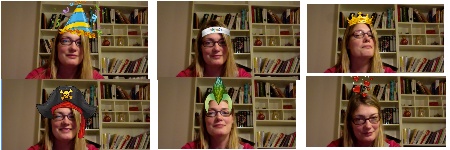A retrospective is distributed when not all the attendees are in one room.
I had facilitated retrospectives IRL for 6 years, based on the timeless books by Diana Larsen & Esther Derby’s “Agile Retrospectives” and Norm Kerth’s “Project Retrospectives”.
Then, because I started working in an organisation that outsourced programming to India, I had to learn to do distributed retrospectives. Since then I’ve been accumulating experience in this challenging setting.
For a few years I used Google Docs to replace whiteboards, flipovers, and post-it notes in my distributed retrospectives. They are easy to use, and everybody can be anonymous, if you send the link instead of inviting everyone. This anonymity is very useful when people are reluctant to be critical about the process, the tools, the communication in the team, etc. Interestingly, I have never had to censor or admonish anyone taking advantage of the anonymity to be abusive, as is often seen on social media.
Then I stumbled over this link to a retrospective template in a Google Drawing created by Ilio Krumins-Beens & Terrence McGovern. They even described how to use it.
Google Drawings is a more flexible tool and makes for more fun distributed retrospectives. I have made some spin-offs of this template since, e.g. : The original, but now with hearts, the 6 thinking hats retrospective, the ship retrospective, the positive retrospective, the loss/gain, pleasure/pain retrospective, the timeline retrospective, the team radar retrospective, and the circles/goals retrospective. You can find descriptions of how to facilitate these types of retrospectives online, so I will not go into detail with this here.
Feel free to use these templates in your own retrospectives. If you come up with new ones or use them in a new way I would love to hear about it!
There are a lot of other tools that can help you with online meetings and even retrospectives in particular. Retrium is one of them, and I find it very helpful as it takes you through all the steps of a retrospective, which makes it easy to use even for beginners in retrospective facilitation.
I have tried a few of these online tools, and I have always returned to the freedom of the Google Drawings. Sometimes people object to using Google Drawings or Docs, but they usually drop their objections when I tell them that they do not have to log in or have a Google account.
When it comes to tools for actually having the meeting, I use whatever the company I facilitate for asks me to use. I am fine with anything between Skype, Zoom, Meet, Slack, Teams, as long as I can see a video of everybody attending the retrospective.
Here is a picture from a six thinking hats retrospective I did when Google Hangouts still offered funny hats. I miss them….
Some points to think about when facilitating distributed retrospectives:
- Preparation; make the Google Drawing (or whatever you choose to use) at least a day before, send an email with a link to it to everybody who will attend the retrospective and ask them to make sure they can access it.
- Send an email again 15 minutes before, reminding them that this is a good time to get coffee. Otherwise people forget until the very last moment. And THEN they will want to get coffee, and THEN when they get up they notice that they need a bio-break, and then the first 5-7 minutes of your retrospective have already been wasted.
- Make sure to be able to see everyone attending on video. Facilitating online has unique challenges, and if you cannot see their body language and what they might be doing instead of listening to their colleagues, it makes it a lot more difficult to know when to call them out or change pace.
- Preferably everyone should have their own camera and be in their own room. This can be hard to achieve, but avoids in-real-life cliques of people that have a parallel discussion on their own.
- If you choose to have a physical board in one of the rooms, instead of a shared document online, you might want to give people an Avatar, someone who acts like them in the other room. Set up a phone call or a chat between two people and let one of them write post-its on behalf of the person they are avatar for.
- 90 minutes max, preferably only 60 minutes.
- Nobody should be allowed to just listen, and it should not be recorded.
- Acknowledge that this is hard, and you will not get the same out of it as if you could do it in real life
- And you know this, of course, but remind them that this is not a blame game when you start. You could even mention The Prime Directive
If you need a laugh now you could look at this Conference Call Bingo sheet or this video of a conference call in real lifethis video of a conference call in real life 🙂


